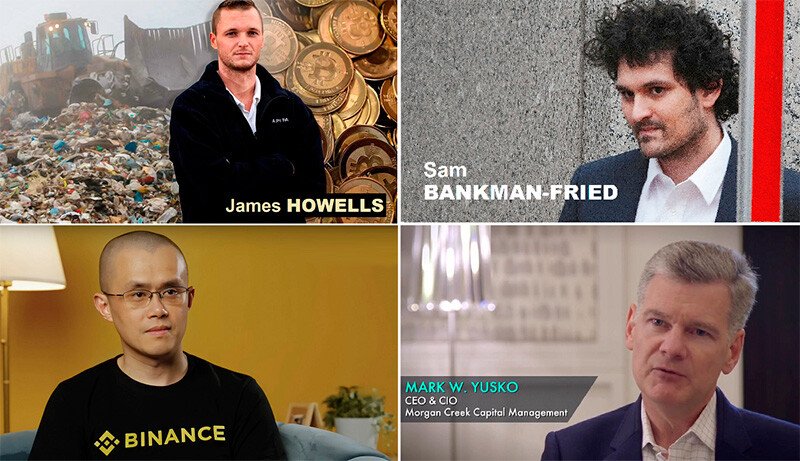Forex and Cryptocurrencies Forecast for March 25 - 29, 2024
EUR/USD: Switzerland Strengthens the Dollar
The key event of the past week was undoubtedly the FOMC (Federal Open Market Committee) meeting of the US Federal Reserve on March 20. As expected, the American Central Bank unanimously decided to maintain the key interest rate at its highest level in 23 years, 5.50%, for the fifth consecutive meeting. Since the rate was anticipated, market participants were significantly more interested in the comments and forecasts of the Fed's leadership. The most important statement came from the head of the regulator, Jerome Powell, who mentioned the consideration of three stages of borrowing cost reduction this year, totalling 75 basis points (bps). The long-term rate forecast was raised from 2.50% to 2.60%.
In comments following the meeting, solid growth in the United States economy was noted. The GDP forecast for this year was increased from 1.4% to 2.1%, and for 2025 from 1.8% to 2.0%. The labour market also appears to be in good health, with unemployment at a low level. According to the new forecast, it could reach 4.0%, compared to the previously expected 4.1%. The number of new jobs created outside of the agriculture sector (NonFarm Payrolls) in February was 275K, significantly exceeding both the previous figure of 229K and the forecast of 198K.
Regarding inflation, while it has eased, it remains "elevated," as noted in the statement. Consumer Price Index (CPI) figures for February showed a 3.2% increase on a year-over-year basis. Inflation is anticipated to settle at 2.4% by the end of 2024, with the core Personal Consumption Expenditures (PCE) index expected to be at 2.6%. Previously, both figures were forecasted to be 2.4% in December.
The comments emphasized that the long-term objective is to bring inflation down to 2.0% while achieving maximum employment. Thus, the Federal Reserve will remain vigilant about inflationary risks. Adjustments to monetary policy parameters may be made if factors emerge that obstruct its objectives. These factors include, but are not limited to, the labor market situation, economic growth, inflation in the US, the state of the global economy, and international events.
As already mentioned, the principal scenario for 2024 includes three rate reductions of 25 basis points each. Nonetheless, members of the FOMC have not discounted the possibility of there being just two or even one reduction. A survey by Reuters found that 72 out of 108 economists, or two-thirds, anticipate the first rate cut to occur in June, with the subsequent ones expected in the fall of this year.
The stock market responded positively to the outcomes of the Federal Reserve's meeting. The S&P 500, Dow Jones, and Nasdaq indices all moved higher, a reaction not mirrored by the Dollar Index (DXY), as news of the beginning of monetary policy easing did not please investors. As a result, EUR/USD surged sharply. However, on March 21, the American currency recouped its losses after the Swiss National Bank (SNB) unexpectedly reduced its key interest rate by 25 basis points to 1.5% at its quarterly meeting, contrary to market expectations of maintaining the rate at 1.75%.
"The easing of monetary policy was made possible thanks to the effective combat against inflation over the last two and a half years," the SNB stated. "Inflation has been below 2% for several months and is within the range that corresponds to the definition of price stability. According to the latest forecast, inflation is expected to remain within this range in the coming years."
Thus, the SNB became the first major central bank to start easing its policy after a long cycle of rate increases due to the COVID-19 pandemic. Consequently, traders "forgot" about the Fed's rate cut signals and began buying dollars, as they currently remain the only high-yield currency with a low risk level.
Support for the dollar towards the end of the working week was also provided by the business activity data in the US published on March 21. The S&P Global Composite PMI index increased to 52.5 from 52.2, and while the PMI index for the services sector decreased from 52.3 to 51.7, it remained above the 50.0 threshold that separates economic growth from contraction. Meanwhile, the Philadelphia manufacturing sector business activity index exceeded forecasts, reaching 3.2, and the number of initial jobless claims in the US for the week fell from 215K to 210K.
EUR/USD concluded the past five-day week at a mark of 1.0808. Regarding the forecast for the near future, as of the writing of this review on the evening of Friday, March 22, 50% of experts voted for the strengthening of the dollar and further decline of the pair. 20% sided with the euro, and 30% took a neutral stance. Among the oscillators on D1, only 15% are coloured green, 85% are coloured red, with a quarter of them indicating the pair is oversold. For trend indicators, the greens have 10%, while the reds hold an absolute majority of 90%. The nearest support for the pair is located in the zone of 1.0795-1.0800, followed by 1.0725, 1.0680-1.0695, 1.0620, 1.0495-1.0515, and 1.0450. Resistance zones are found in the areas of 1.0835-1.0865, 1.0900-1.0920, 1.0965-1.0980, 1.1015, 1.1050, and 1.1100-1.1140.
The upcoming trading week will be shorter than usual due to Good Friday in Catholic countries, where banks and stock exchanges will be closed. It will also be the last week of the month and the first quarter. Market participants will be summarizing the quarter, and there will be few important statistical releases. Nevertheless, notable in the calendar is Thursday, March 28, when data on retail sales in Germany will be released, as well as revised annual data on the US GDP and the volume of jobless claims. On Friday, March 29, despite the holiday, statistics on the consumer market in the United States will be released, and Federal Reserve Chair Jerome Powell is scheduled to speak.
continued below...














